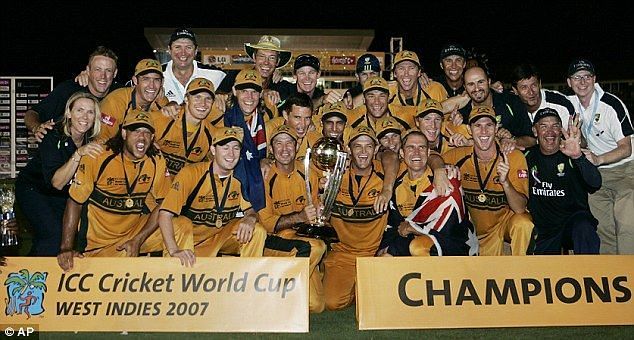
Combined ODI XI of Australia and South Africa from the 2000s
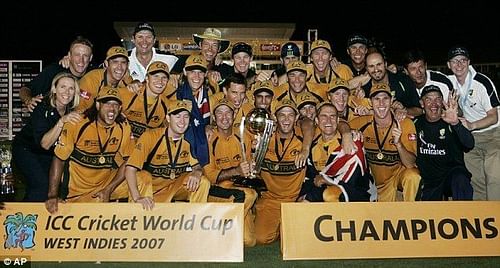
India's ODI World Cup triumph in 2011 was historical. The 28-year wait of a billion people bore fruit as a certain Sachin Tendulkar finally won the competition in his sixth attempt. However, the win was also significant for another reason.
It marked the end of an era of Australia's domination in ODI cricket. Three consecutive World Cup titles and two Champions Trophy wins in 12 years.
The nineties were the best time to be an Aussie fan. The modern-day invincibles tore through many oppositions one after another. However, one team managed to lock horns with the mighty Australians and even beat the Aussies on their day.
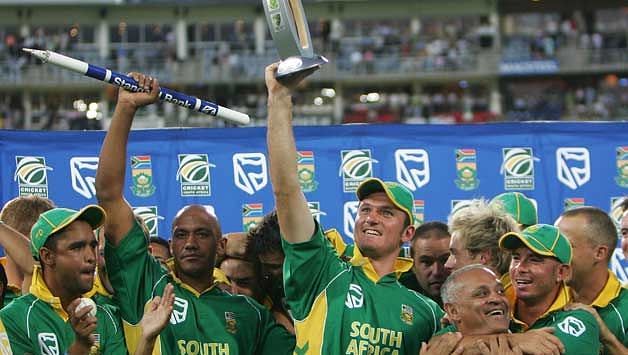
Graeme Smith's South Africa were David to the Australian Goliath. In this respect, the match that suddenly pops up in everyone's minds is the one hailed as the best ODI ever played.
In the 2006 series decider at the Bullring, South Africa chased down Australia's mammoth 434-4. The Aussies had just piled up the tallest ODI score in history, but it lasted barely four hours as the Proteas pulled off a mighty heist.
Thus, hypothetically speaking, an ODI XI combining the best of these two sides would be able to beat any other ODI XI on their day. Without further ado, let us dive into the combined XI of the Invincibles and their Nemesis from the 2000s.
Openers of the combined Australia-South Africa ODI XI of the 2000s:
# 1: Adam Gilchrist (Wicket-keeper)
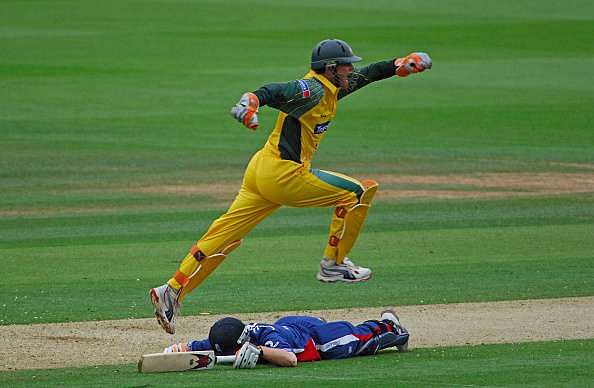
The best wicket-keeper to have come out of Australia, Adam Gilchrist is also the second-highest run-scorer for Australia in ODIs. Gilchrist has a tally of almost 9600 ODI runs at an average of 36 and a swashbuckling strike rate of 97.
His acrobatics, along with his ability with the bat gets him in the combined Australia-South Africa ODI XI ahead of his counterpart Mark Boucher.
Gilchrist was among the first crop of batsmen who made full use of the powerplay restrictions to provide flying starts to their sides. He also could churn out match-winning efforts in crucial matches. Gilchrist's 149 in the 2007 World Cup Final helped Australia beat Sri Lanka in a rain-truncated title match.
# 2: Graeme Smith
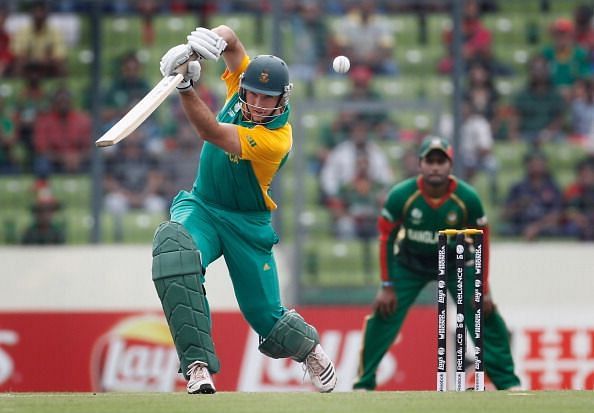
Partnering Gilchrist in the best Australia - South Africa ODI XI of the 2000s would be another southpaw, former South African captain Graeme Smith.
Smith scored at a slightly slower pace and would hence be the perfect opening companion for Gilchrist. He had a strike rate of 80, which is rather slow for an ODI opener. But Smith could also play explosive knocks like the 90 off 55 balls that set the tempo for that historic Proteas chase of 434 runs in 2006.
The South African left-hander scored almost 7000 ODI runs at a healthy average of 38. However, the critical advantage that edges Smith into the combined Australia - South Africa ODI XI side over challengers like Matthew Hayden is the former's reading of the game.
A 23-year old Smith took stock of an ailing South African side shell-shocked by its 2003 World Cup exit on home turf and transformed them into a world-class unit. Smith's tactical experience would be an asset to any team, and he could theoretically be a fitting vice-captain in this side.
Middle Order of the combined Australia - South Africa ODI XI from the 2000s
# 3: Ricky Ponting (Captain)
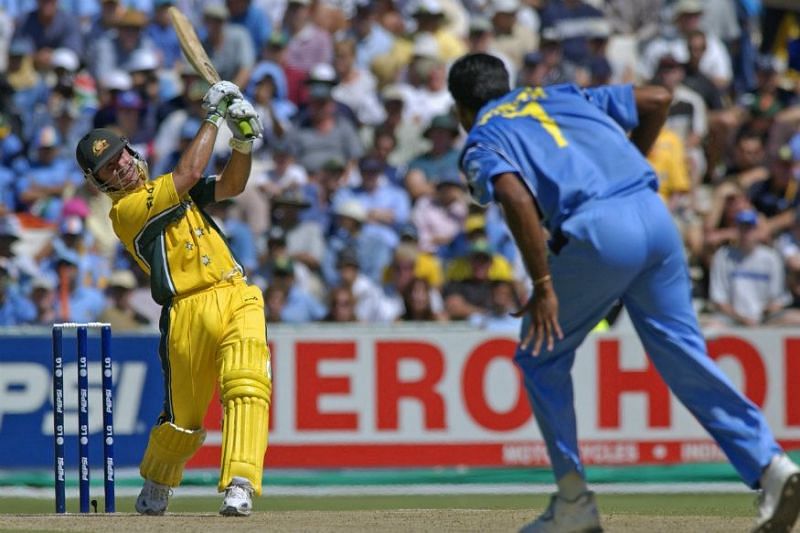
The combined Australia - South Africa ODI XI team from the 2000s will be headed by the legend Ricky Ponting.
This man stepped into the ground with a winning mentality at all times. His methods and tactics were brutally effective even when they were borderline irritating at times. However, if there was a match that needed to be won, Ricky Ponting was the man for the job.
Ponting is the most illustrious ODI batsman to have come out of Australia. With over 13500 runs at an average of 42, he is only behind the legendary Sachin Tendulkar and Kumar Sangakkara in the list of all-time run-scorers in ODI cricket.
If that was not enough, Ponting was also one of the best fielders in international cricket. Short cover, gully, or point - his lightning throws were a menace from anywhere within the 30-yard circle.
# 4: Herschelle Gibbs
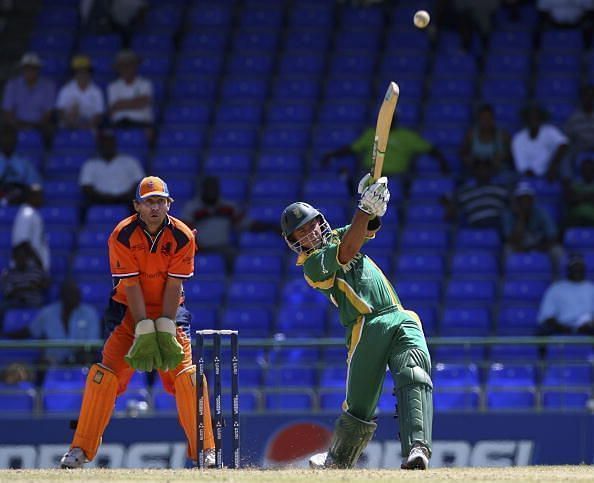
Herschelle Gibbs was the architect behind the South African chase of 434 runs at the Bull Ring. His 175 off 111 can well be regarded as one of the most remarkable innings of all time while chasing.
Gibbs scored over 8000 ODI runs at a decent average of 36. The right-hander invariably rose to the fore in crunch situations and had a knack for scoring daddy hundreds.
Gibbs was also a fabulous fielder, despite that catch he 'dropped' in the 1999 World Cup. His grit and determination would come in handy for any side.
# 5: Jacques Kallis

Jacques Kallis is the greatest all-rounder in the modern era. The fact that he is both South Africa's highest run-scorer and their third-highest wicket-taker in ODIs speak volumes of his versatility.
Kallis was effectively a combination of an opening bowler and a middle-order batsman. The right-hander scored 11550 ODI runs and scalped 269 wickets for the Proteas before hanging up his boots in 2014.
Though his strike rate was often a matter of concern, Kallis would don the middle order mainstay in this combined Australia - South Africa ODI XI of the 2000s.
Besides, the two batsmen to come after Kallis in this hypothetical XI are essentially known for their quick-scoring skills. Finishing off the innings for this team would thus be the job for the numbers 6 and 7.
# 6: Michael Clarke
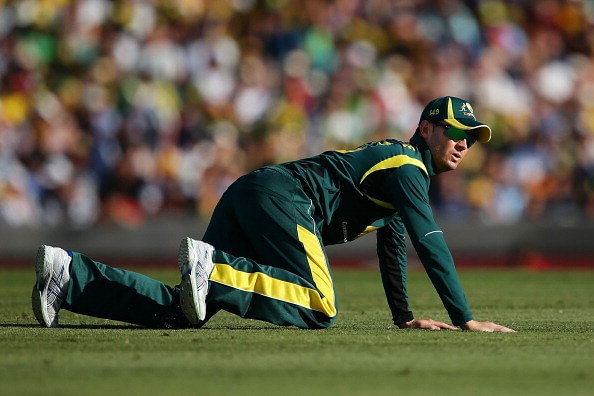
The Pup from New South Wales fills the number 6 slot in our combined Australia - South Africa ODI XI of the 2000s.
Accumulating almost 8000 runs in the format at an average of 45, Michael Clarke helped Australia reclaim the World Cup in 2015. Clarke was one of the younger players in the golden generation of Australian cricket, but his temperament was second to none.
The right-handed batsman was also a useful orthodox left-arm spinner. He has a five-wicket haul in ODIs to his name. Given that our hypothetical team contains only one spinner, his additional spin-bowling attribute makes Clarke a worthy addition to the side.
# 7: AB de Villiers
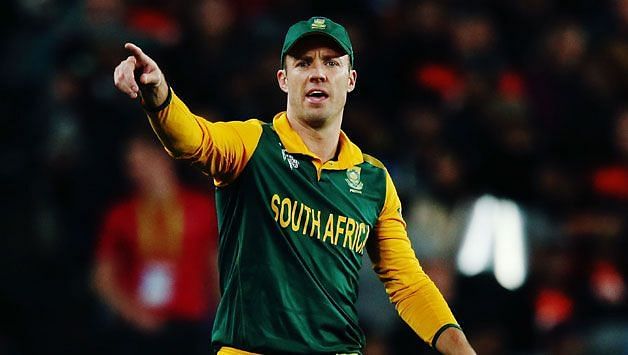
Given his big-hitting prowess, number seven is at least a few slots lower than what AB de Villiers merits.
As a player, AB de Villiers needs little introduction. Before evolving into the Mr. 360 as he is known now, De Villiers used to be an excellent lower-order batsman. His ability to score runs at a brisk pace and find boundaries made him a valuable addition to his side.
De Villiers is more suited for the floating-hitter role, as he can up the scoring rate at will. From the statistical perspective, De Villiers has the fastest 50, 100 and 150 in ODIs, besides scoring over 9500 runs at a spectacular average of 54.
Among all players who have scored 9000 or more runs in ODIs, De Villiers (101.27) is the only one who has a strike rate of more than 100.
All-rounder of the combined Australia - South Africa ODI XI of the 2000s:
# 8: Shaun Pollock
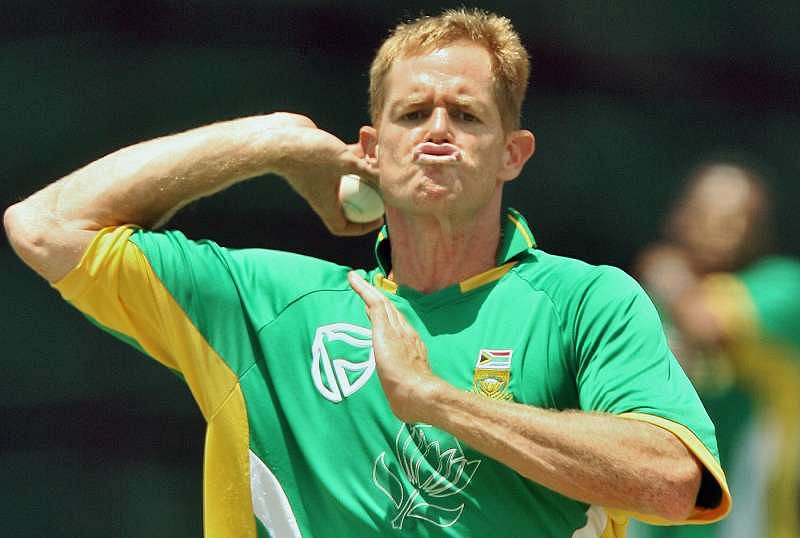
Shaun Pollock could make any ODI XI solely because of his seam-bowling skills.
His 393 ODI wickets, at an average of under 25, are the most by any Australian or South African player. However, what makes him legendary is his economy rate - a measly 3.67.
Such was Pollock's impact in ODIs that he remains one of the very few bowlers in the millennium who has an economy of under 4. His ability to continually hit the excellent length was rivalled only by Glen McGrath. The slow bouncer is also often attributed to Pollock, a delivery that is now increasingly employed in limited-overs cricket in recent times.
Pollock was also more than handy as a lower-order batsman or a pinch hitter as he made excellent use of the long handle. With an aggregate of over 3500 ODI runs compiled at an average of 26, you could always count on Pollock to get you a final flourish.
Bowlers of the combined Australia - South Africa ODI XI of the 2000s:
# 9: Shane Warne
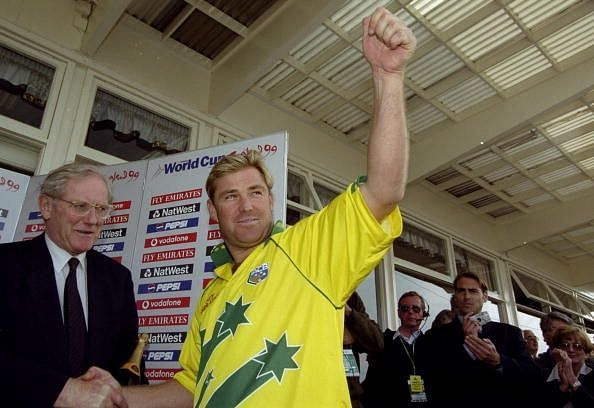
Shane Warne was not as successful in ODIs as he was in Tests. However, he still managed to scalp 291 wickets in the format at an average of 25.
Both Australia and South Africa are better known for their fast-bowling prowess. However, if we need to choose a spinner for their combined ODI XI of the 2000s, Warne would be leaps and bounds ahead of any competition.
Warne had more variety in his arsenal than any other spinner. Coupled with the prodigious turn he could extract from any surface, Warne was virtually unplayable on his day. He mastered the art of the flipper, and he employed the low ball to trap batsmen leg-before.
With the bat in hand, Warne was no mug, as is evidenced in his tally of more than 1000 runs in ODIs.
# 10: Brett Lee
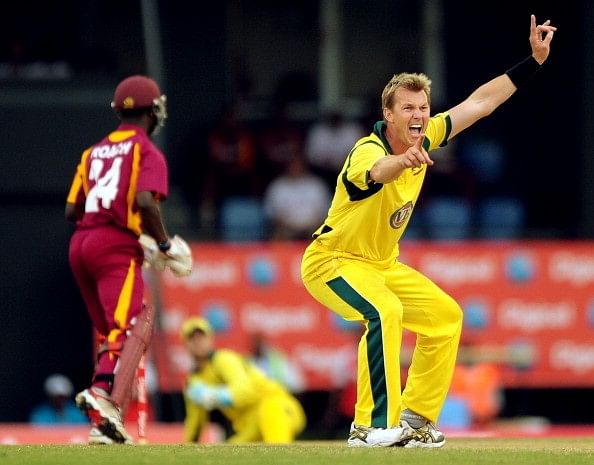
The blonde bombshell as he was fondly called, Brett Lee is undoubtedly the most stylish bowler of the 2000s decade. He was also among the fastest and probably had the most imitated bowling action of all time.
Lee could breach the famed 100 mph barrier and also possessed a lethal yorker. During his career, he also developed an ability to reverse swing the ball, which made him tougher to face.
Tearaway fast bowlers with control are a rare breed, a fact that is no better exemplified by Lee. His 380 ODI wickets at an average of just over 23 are impressive.
The right-hander was also a belligerent customer with the bat and often scored crucial runs lower down the order for Australia.
# 11: Glenn McGrath
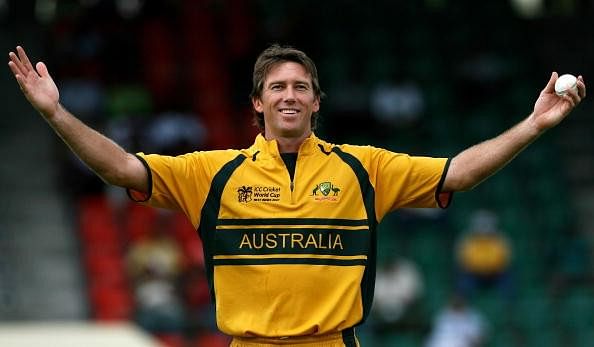
The combined Australia - South Africa ODI team, winds up with the paragon of accuracy- Glenn McGrath.
It was said that McGrath could pitch all six balls in an over, square on a coin placed at a good length on a pitch. It was his nagging consistency and irritatingly uncomfortable line on the corridor of uncertainty that made McGrath so successful.
His bowling was almost like the batting of a certain Rahul Dravid - simple, monotonous, boring, yet brutally effective.
McGrath boasts a miserly economy rate of 3.87 in ODIs. He picked up one more wicket in ODIs (381) than his partner-in-crime Brett Lee (380), but at an impressive average of under 22.